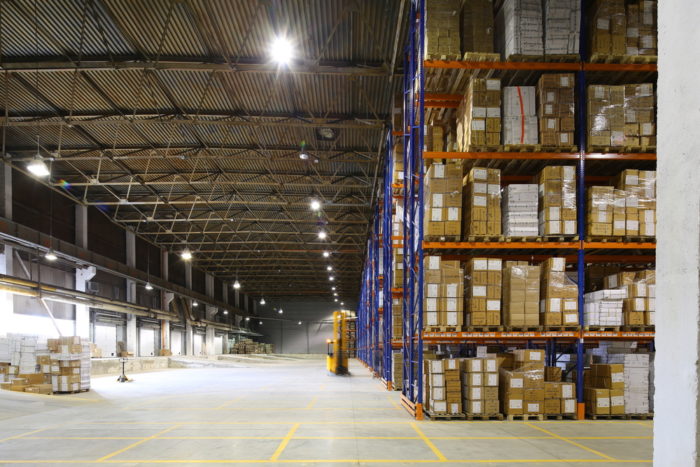Throughout the Industrial Age businesses have looked for continuous improvement in the supply chain. Managers sought ways to streamline operations and eliminate waste by establishing working protocols, leveraging new technology, or even shifting their business models. As times change, successful businesses adapt and modernize.
Technology provides many opportunities to support a continuous improvement process, but it isn’t the only route to success. Even smaller changes like switching to plastic pallets or adopting a pooling model can streamline operations. Ideally, managers can start with something small and then work their way up to more complex strategies.
Modern Methods of Continuous Improvement in the Supply Chain

Continuous improvement in the supply chain is a process driven by focused and incremental solutions. Changes aren’t made just for the sake of change. They resolve issues with as few steps as possible.
Problem |
Solution |
| High demand shipping: Today’s consumers expect shipments to reach them quickly. Keeping retailers stocked while limiting excess inventory is a challenge. | Decentralized infrastructure: Using several small warehouses or distribution centers, managers shorten trips and provide shipments faster. This strategy also cuts back on carbon emissions from trucks and transportation expenses. |
| Tracing shipments: Supply chain routes have grown in complexity and include travel by air, trucks, rail, and boat. Monitoring the path of shipments is vital but challenging. | Warehouse Management Systems: The WMS creates a computerized record of all the paths a shipment takes on its way to the final destination. Managers can easily access this information and trace pallets for recalls or missing shipments. |
| Sustainability: Today’s consumers demand environmental responsibility from corporations and business leaders. Unfortunately, the supply chain is often rife with waste. | Circular models: A closed-loop strategy helps build sustainability in the supply chain. Supply chain managers seek ways to recycle and reuse resources, to keep them in the company and out of the landfill. |
| Human error: Human error will always be a problem in the warehouse. It leads to injuries, waste, damaged shipments, and production delays. | Automation: Implementing automated tools like self-driving forklifts, robots, and conveyors provides flow for products while limiting human intervention. As workers handle shipments less, incidents of human errors are reduced. |
Many modern solutions will require additional support to ensure they’re streamlined and well maintained. Companies may need to update some outdated tools and procedures that could limit a solution’s effectiveness.
Using Plastic Pallet Pooling to Support Continuous Improvement

Some of the most significant opportunities for improvement can be found in pallets. Wood pallets create problems and waste time for workers. Specifically, wood pallets can:
- Create debris: Wood sheds splinters and sawdust that makes floors slippery and jams equipment. Wood pallet debris requires extensive clean up that takes time and labor better spent elsewhere.
- Jam equipment: Wood pallets are held together with hardware like nails and staples. These materials can break off and interfere with gears and conveyors, causing jams that lead to production delays.
- Damage products: Sharp shards of wood or splinters may puncture packaging and damage contents. Broken boards can result in unstable loads that spill.
- Injure workers: Wood pallets are heavy, and workers may suffer from back strains when they improperly lift the pallets. Nails and hardware can cut warehouse workers, leading to infections and even serious illnesses.
- Limit fuel efficiency: Heavy wood pallets increase the overall weight of loads. The heavier a load, the more gas required for transport. Not only does this increase transportation costs, but it also creates more greenhouse gas emissions.
- Spread contaminants: Wood is natural and, therefore, has pores. Spills can seep deep into those pores in places where they cannot be washed away. Those contaminants may eventually spread to other loads, leading to illnesses, recalls, and lost products.
- Waste space: Maintaining a pallet fleet takes up space, as the warehouse has to hold a store of pallets for periods of high demand. Valuable warehouse real estate should not be wasted on empty pallets.
In approaching these problems from a continuous improvement perspective, a manager would want to consider the easiest path to resolving all these issues. That solution lies in plastic pallet pooling.
Plastic pallets do not share the same issues with debris or product damage because they don’t have hardware or shed splinters. Also, as plastic is nonporous spills stay on the surface and are easily removed. Additionally, plastic pallets are up to 35 percent lighter than their wood counterparts. That helps reduce their burden on vehicles and cuts back on fuel use.
Of course, switching an entire pallet inventory to plastic may not be a practical solution. This is where plastic pallet pooling comes in. Companies can lease, rather than own, pallets. Pooling has several benefits aside from cost reduction. The pallet company is responsible for maintaining and picking up pallets. Managers can also save valuable space as there is no need to store overflow pallets for high demand. Instead, they can increase their inventory as needed.
Switching to plastic pallet pooling is perhaps one of the easiest ways to implement continuous improvement in the supply chain because it solves myriad problems in a single step. These pallets also support modern technologies and strategies that build sustainability, improve operations, and protect employees.
Pooling with iGPS pallets is a fast way to implement continuous process improvement in the supply chain. To discover our program’s benefits, call 1-800-884-0225, email a specialist at switch@igps.net, or visit our contact page.



